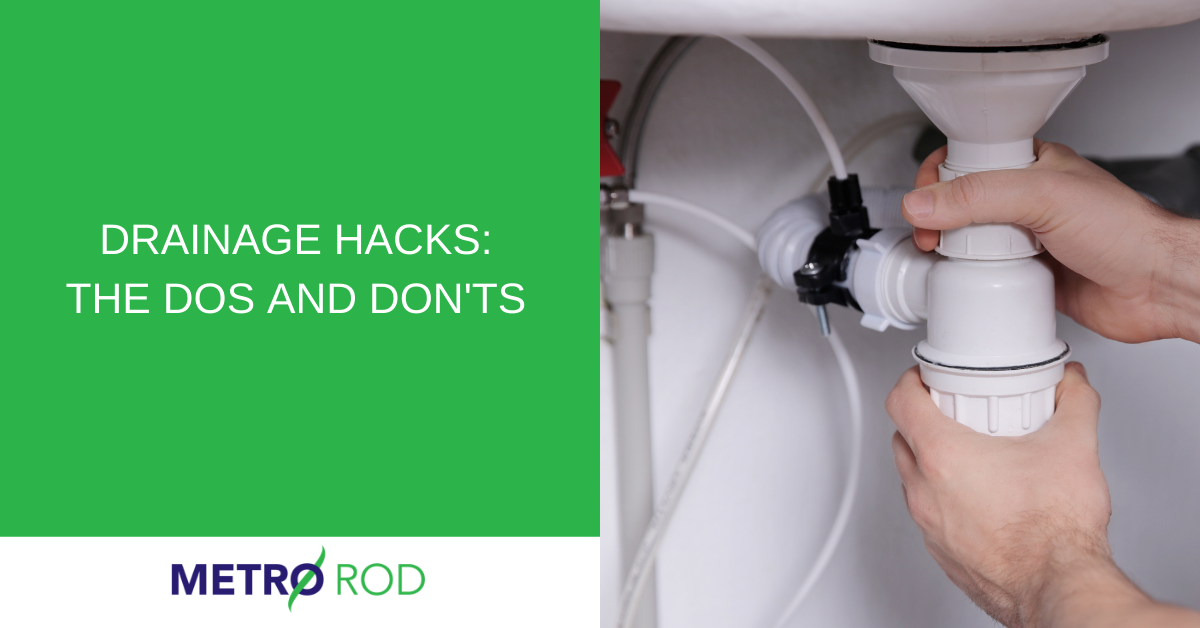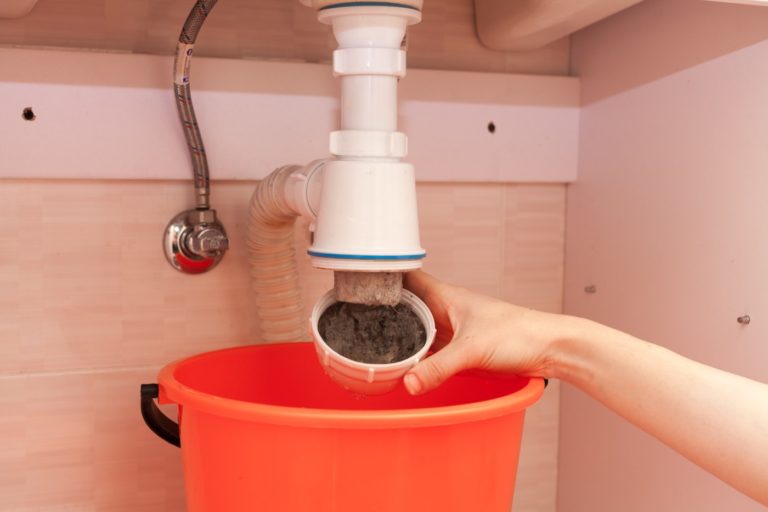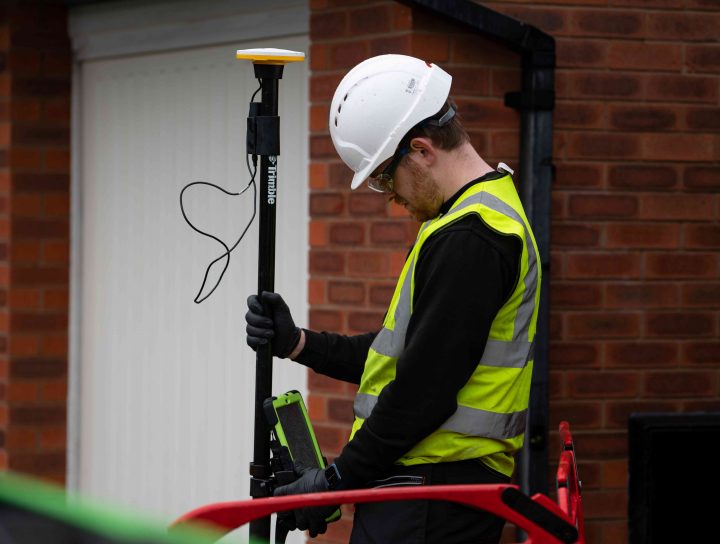A sudden issue with your drains – whether it’s minor or major – might strike panic that a repair is going to be costly, time consuming and disruptive. Often, whether in the case of an avid DIY-er or someone just looking to get the problem sorted as quickly and cheaply as possible, people will reach for their smartphone and head to Google.
The internet is filled with drainage ‘hacks’ – nifty takes on how a few tools found around the home can be used to achieve the same effects as calling out a drainage engineer and solve your issue. But do they really work? Any advice that’s not from a drainage expert should be approached with caution.
We want to breakdown those myths and tell you what’s safe to do at home, which drainage hacks will work and which you should avoid entirely, instead, leaving them in the hands of a drainage pro. So, our technical team have shared their advice:
Which drainage hacks really work?
“No-one wants to have issues with their drains; it’s one of those unwelcome problems in life. But they are essential to the structure and running of our home, so they must be looked after.
“A quick Google of some home-based drainage solutions will bring up a variety of results. When you call us for advice, we’ll be honest with you; we’ll explain which of those hacks will work a charm, meaning we don’t need to come out. We’ll tell you which are a stopgap and should only be used as a temporary measure before calling out an engineer, and we’ll tell you which to totally avoid, minimising risk to yourself and others in your home.
“To keep you safe and also protect your property, we’ve broken down some of the most common DIY drainage techniques, so you know the steps to follow before we reach you.”
1. Use a plunger
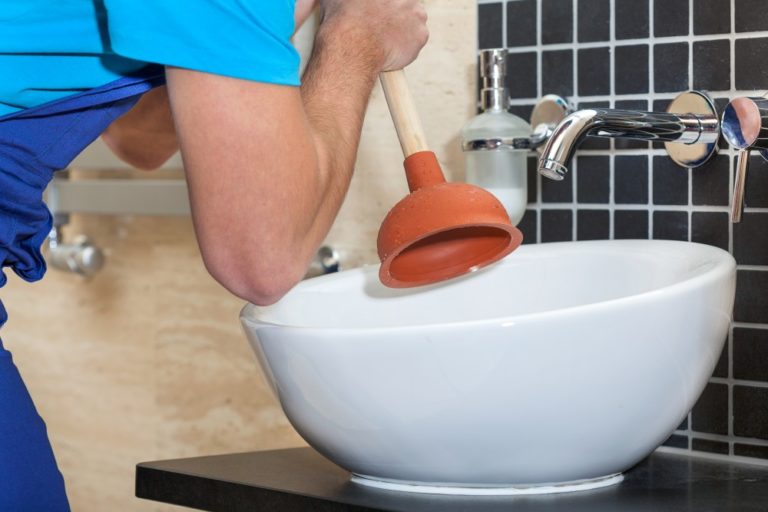
“This is a tried and tested method that is safe to do at home but must be done properly.
“Firstly, fill your blocked sink with hot water until it's about halfway full and creates a seal around the drain. Position the plunger over the drain and begin pumping up and down quickly, several times. You’ll need to hold a cloth to cover the overflow, which may require two pairs of hands.
“Repeat the process until the water drains freely.
“You’ve got to be really careful not to plunge too hard, otherwise you risk blowing your pipes to bits.
If you’re concerned about causing damage, it’s best to leave the plunging and call a professional. At Metro Rod, we can visit your property and use rope pumps – essentially a turbo-style plunger – to clear the blockage quickly and safely.”
2. Pour boiling water
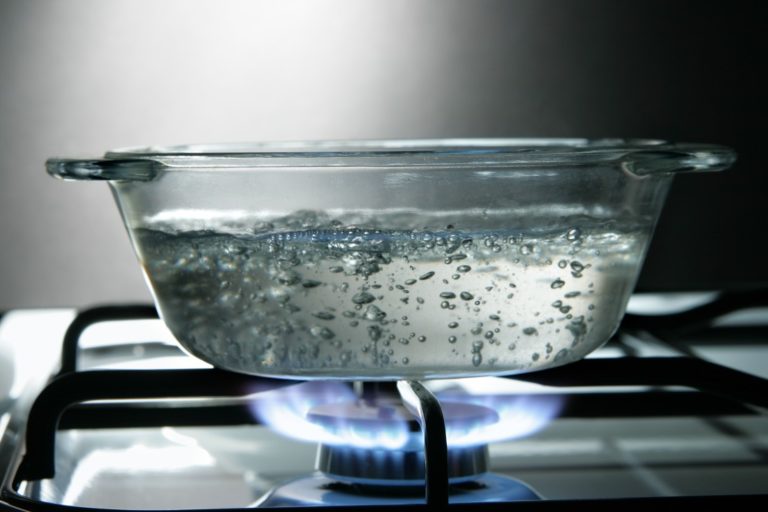
“Lots of people claim this to be the simplest of all tips.
when it comes to cleaning drains, saying it’s perfect for clearing fats, oils and grease can collect in the waste trap and pipework.
“But pouring boiled water from a height into your pipes puts you at more risk of scalding yourself, than ever being able to clear a blockage. To effectively unblock a pipe, you need to be close to the clog. If your build-up is two metres into the pipe, no amount of boiled water is going to do any good. It might break some of the build-up down, but not enough to be effective.
“An indicator that your pipe is clogged, is slow draining water. People tend not to contact us until water has completely stopped flowing into the drain, at which point you might be weeks or months into the problem.
“If your drain is running slowly, call us for advice before you consider working with boiled water, because the risks are very high, for very limited impact.”
3. Professional-strength drain cleaner
“Now widely available on the internet and in supermarkets, lots of people turn to professional-strength drain cleaner to clear their pipes. It’s made up of caustic soda, also known as sodium hydroxide, which is a very aggressive chemical.
“If you think you have a minor blockage that’s close enough to the surface to treat, this can be effective. If the blockage is beyond your u-bend or trap, the mixture will simply sit in the pipe and turn hard, like concrete, causing other issues.
“Drain cleaning products should always be treated with lots of care; if you don’t follow the manufacturer’s instructions to the letter, you could end up with chemical burns so ensure you’re wearing protection on your eyes and hands. Alternatively, call out a drainage expert who can manage the process safely on your behalf.”
4. Homemade remedies
“You’ll often find people recommending replacement drain cleaner recipes, which are a bit softer on the environment and only require ingredients usually found in your cupboard. Baking soda mixed with vinegar is a popular suggestion. It creates a fizzing action which many claims to have been effective in clearing their blocked drain.
“In the same manner as professional-strength drain cleaner, this will have minimal impact. It will certainly make your sink nice and clean, but its ability to clear a blockage is limited.”
5. A drain auger - or snake
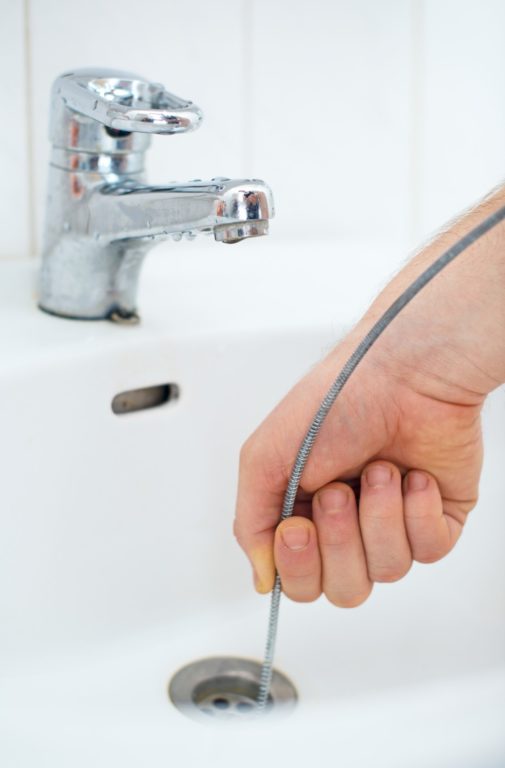
“A drain auger – or drain snake – is a slender, flexible rod used to dislodge clogs. These days, there are lots of hand-operated augers available in hardware shops, which are essentially a low-tech version of the electro-mechanical machines used by professional drainage engineers.
“In the hands of someone savvy or skilled in DIY, they can work nicely to clear localised blockages in showers and sinks. However, they can be quite flimsy, some only have short cables and they’re not effective on every type of drainage system. They’re great for u-bends, but if you have a bottle trap, you’ll have to take it to bits first.
“If you’d rather leave it to the professionals, we can use equipment that’s industry-leading, which can easily pass through multiple bends, reaches further into the system and is effective on even the smallest of pipes.”
6. A bent wire
“Who said drainage problems had to be expensive? Lots of people recommend repurposing a wire coat hanger to reach into a drain cover and clear blockages.
“In reality, this will achieve nothing other than dislodging any hair that’s caught in your pipes. Make sure you use the wire to pull hair and other debris out, rather than pushing it further into the pipe.
“This is a cheap and quick solution for the very, very smallest of issues. For anything more complex than this, a flimsy wire won’t cut it.”
7. Remove the waste trap
“If you consider yourself handy with pipes, you can attempt to completely remove a waste trap to get to grips with your blockage. First, place an empty bucket underneath the u-bend or trap below the sink or basin. Then, unscrew the nut on the bottom of the sink and the waste pipe – this will allow you to inspect the internals, and clear away any debris or other material that are clogging the system. Once you’re done, simply replace the trap and run some water into the sink.
“If your problem persists, it is time to call in the professionals. Additionally, we wouldn’t recommend doing this if you’re not into DIY at all. The extent of leaks that could be caused by doing this incorrectly will cause you additional issues which will lead to further damage.”
8. Use a wet vac
“Wet vacs – normal carpet vacuums which use water rather than air to clean a floor – can be very useful for clearing blocked drains. You’ll need two pairs of hands, and once again we’d only recommend this if you’re handy with DIY.
“While one person covers the overflow on a sink or basin, the other should place the vac’s hose onto the sink outlet and form a strong seal. Then, turn on your machine and let the suction action work its magic. It will suck up the excess water sitting in your pipe, and usually brings the blockage with it so your system clears.
“All of our engineers are equipped with industrial-strength alternatives to a home wet vac. They’re very powerful but sensitive to the nature of drainage systems, making sure we’re able to effectively clear blockages without posing any risk to your pipes. If you’d prefer to use one of our machines, in the hands of one of our experts, get in touch.”
So, there you have it. Some tips and tricks you’ll find on the internet are effective and might provide a quick fix to some of the more trivial matters associated with drainage. Others will be less successful, and some are even dangerous.
Contact Metro Rod
We’re available to provide free advice on your particular issue, so give us a call if you have any problems with your drains. If we think there’s a solution you can do yourself, we’ll talk you through it. If you’d benefit from a visit from one of our engineers, we’ll send someone out to diagnose the problem and explain the different solutions.
We’re here to help – put your trust in us to protect yourself, others and your home.
For advice on your drainage issue or to book an appointment, contact your local depot or call us on 0800 66 88 00.
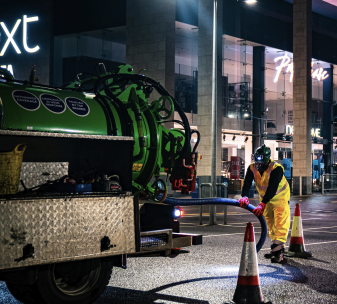
Talk to your local Metro Rod specialist
We are always happy to arrange a free site assessment and no obligation quotations for any work you might need. Alternatively, you can call our emergency hotline number on 0800 66 88 00
Get in touch Drainage Services